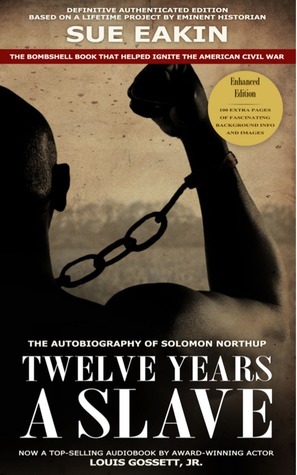What do you think?
Rate this book


363 pages, ebook
First published February 5, 1853
Old books get a bad rap...but do they deserve it? Check out my latest BooktTube Video - all about the fabulous (and not so fabulous) Olde Boies.
What difference is there in the color of the soul?Solomon Northup, born a free man during slavery times in America, is tricked and subsequently sold into slavery.
There may be humane masters, as there certainly are inhuman ones - there may be slaves well-clothed, well-fed, and happy, as there surely are those half-clad, half-starved and miserable; nevertheless, the institution that tolerates such wrong and inhumanity as I have witnessed, is a cruel, unjust, and barbarous one.Now, while this was used as propaganda, it was not a work of fiction.
I don't want to survive, I want to live.You can learn about slavery in history class but reading bland facts does not compare to first hand accounts. This sheds a complete new light on this shameful part of history.


“I could not comprehend the justice of that law, or that religion, which upholds or recognizes the principle of slavery.”
“At such times, the heart of man turns instinctively towards his Maker. In prosperity, and whenever there is nothing to injure or make him afraid, he remembers Him not, and is ready to defy Him; but place him in the midst of dangers, cut him off from human aid, let the grave open before him, then it is, in the time of his tribulation, that the scoffer and unbelieving man turns to God for help, feeling there is no other hope, or refuge, or safety, save in his protecting arm."
“Oh! how heavily the weight of slavery pressed upon me then. I must toil day after day, endure abuse and taunts and scoffs, sleep on the hard ground, live on the coarsest fare, and not only this, but live the slave of a blood-seeking wretch, of whom I must stand henceforth in continued fear and dread."
“Life is dear to every living thing; the worm that crawls upon the ground will struggle for it.”
"Let them know the heart of the poor slave—learn his secret thoughts—thoughts he dare not utter in the hearing of the white man; let them sit by him in the silent watches of the night—converse with him in trustful confidence, of "life, liberty, and the pursuit of happiness," and they will find that ninety-nine out of every hundred are intelligent enough to understand their situation, and to cherish in their bosoms the love of freedom, as passionately as themselves."
“Really, it was difficult to determine which I had most reason to fear—dogs, alligators or men!”
cotton

